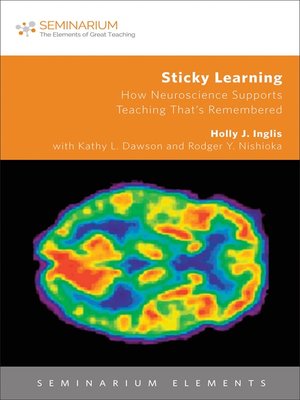Sticky Learning
ebook ∣ How Neuroscience Supports Teaching That's Remembered · Seminarium Elements
By Kathy L. Dawson

Sign up to save your library
With an OverDrive account, you can save your favorite libraries for at-a-glance information about availability. Find out more about OverDrive accounts.
Find this title in Libby, the library reading app by OverDrive.



Search for a digital library with this title
Title found at these libraries:
| Library Name | Distance |
|---|---|
| Loading... |
Despite the introduction of new technologies for classrooms, many seminary courses still utilize primarily auditory methods to convey content. Course outcomes may include opportunities for learners to demonstrate knowledge and skills gained but may not include opportunities for learners to begin to embed knowledge and skills into their long-term memory.
Educators are engaging with neuroscientists to reshape classroom practices, content delivery, curriculum design, and physical classroom spaces to enhance students learning and memory, primarily in elementary and secondary education. Why not in seminary education?
An overview of how learning occurs in our brain, what the different types of memory are, and how memory is created serves as a framework for suggesting pedagogical tools. These brain-friendly tools are specifically applied to individual academic disciplines, enabling instructors to make concrete modifications in the structure and content of what is taught, making learning more sticky.Ingliss synopsis of the use of neuroscience in the classroom and suggested action is followed by a collaborative dialogue with Kathy L. Dawson and Rodger Y. Nishioka. Dawson and Nishioka provide practical commentary regarding the successful implementation of Ingliss proposed approach. As a group, Inglis, Dawson, and Nishioka create a text that extends pedagogical innovation in inspiring but practical ways.







